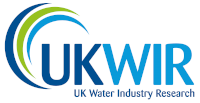Active Leakage Control Efficiency in the Sustainable Economic Level of Leakage Calculation
Project overview
Regulators are challenging water companies to achieve significant reductions in leakage. There is a drive from companies that this should continue to be based on sound economic analysis, however the relationship between Active Leakage Control (ALC) input and the subsequent benefits realised for the leakage economics modelling is derived from internal company data which results in inefficiency.
This UKWIR project examined how ALC efficiency can be defined, quantified and incorporated into leakage economics modelling. It investigated alternative definitions for ALC efficiency and alternative parameters for measuring it. This project established the most useful definitions and metrics before gathering data from companies to establish which metric provides the most viability and therefore what levels of ALC performance should be achievable.
Reducing demand for water via leakage reductions is key to maintaining longer term water sufficiency. In our PR19 business plan and our Water Resources Management Plan 2019 (WRMP19), we committed to a 15% leakage reduction over AMP7 and a 50% leakage reduction by 2050.
To deliver these ambitious leakage reductions, this UKWIR report highlighted the method and importance of gathering information regarding:
- Burst/repair data, amongst other data sources (including other industry data sources and “open data”), to fully understand the cause and mode of water network infrastructure/pipe failure; and
- Understanding (the factors that predispose a pipe to fail/leak) to model/predict pipe failures to inform our shorter term operational response (e.g. active leakage control) and/or medium to longer term strategic programmes of work (e.g. mains rehab/replacement and other asset health oriented interventions).
Project Recommendations
The project recommends collecting data for as many of the potential explanatory factors identified in the report as practicable, noting the priorities assigned therein.
It recommends that we build models of ALC efficiency based upon the approaches described in the report to improve understanding of ALC performance and should analyse interventions, District Metered Areas (DMAs) and regions for which a low efficiency value is calculated in models developed to identify themes that can be addressed.
Once models developed have identified the causes of inefficiency, we should implement any actions that can be identified to address these, and use the outputs of ALC efficiency models to understand how the costs of efficient ALC activities compare to other approaches to leakage reduction.
